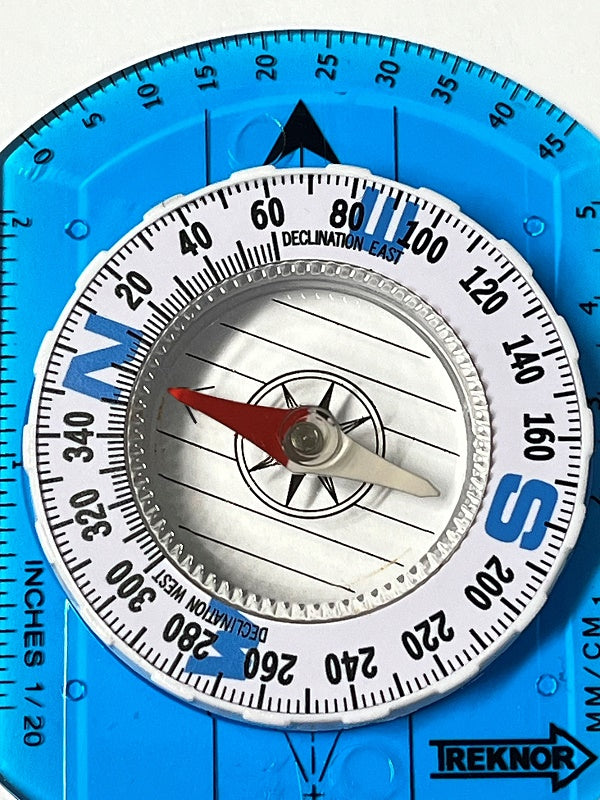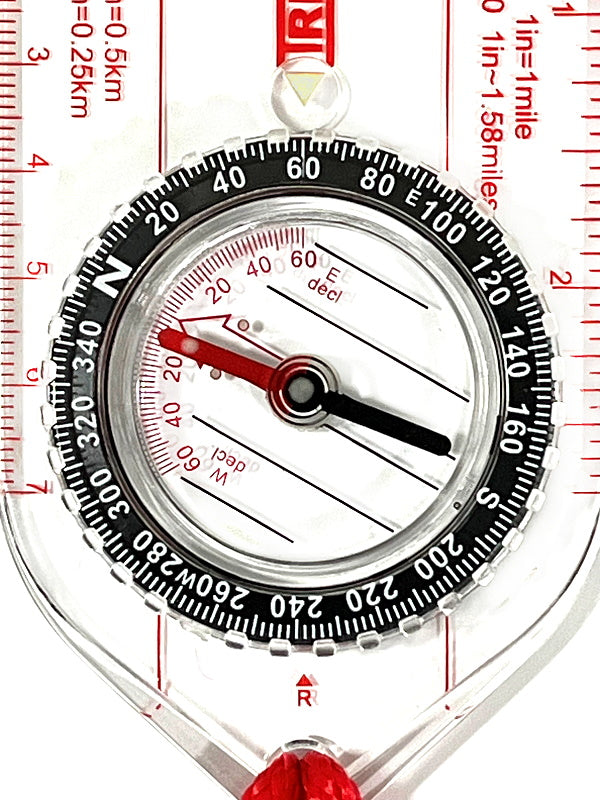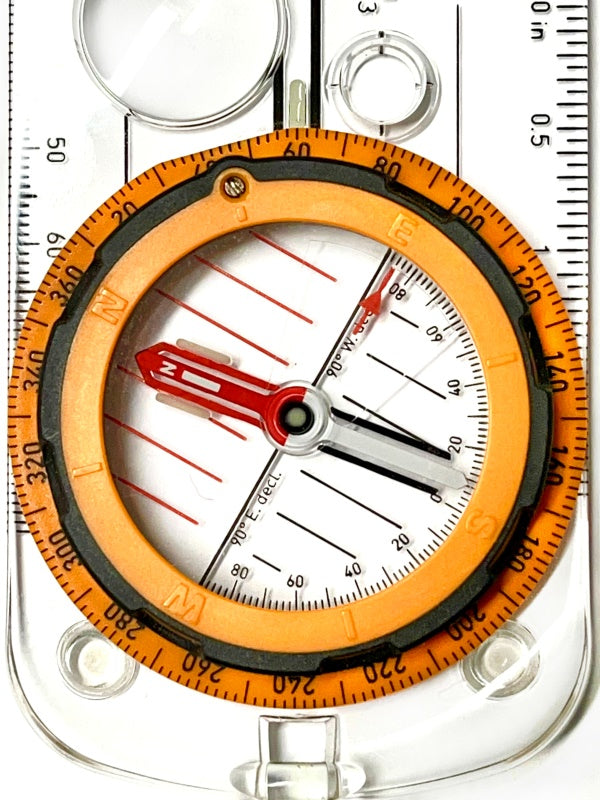How to Use Your Declination
A BASIC UNDERSTANDING - WORKS WITH ANY COMPASS

This difference between where your compass points (Magnetic North) and the real north on a map (True North), measured as an angle in degrees, is called magnetic declination. First, you must understand that Easterly declination values are positive, and Westerly declination values are negative. To find out what your compass is really saying just add your declination value to your reading.
If your compass says you are heading at 60 degrees, and you have a declination of -8 (8 Degrees Westerly), then you are really heading at 52 degrees (60 – 8 = 52) relative to True North. So, if you really want to head at a bearing of 60 degrees you will need to set your compass to 68 degrees, because 68 – 8 = 60. Understanding this concept will allow you to use virtually any compass, as long as you remember to do your math. But there are easier ways to adjust for declination: you can use a compass with 1) a fixed declination scale, or 2) adjustable declination.
USING A COMPASS WITH A FIXED DECLINATION SCALE

Some of the most basic baseplate compasses have a fixed declination scale. If you remember back to basic compass directions, when you are taking your bearing you need to rotate the bezel to get the needle to point to the N at 0 degrees. But if you are looking for your direction relative to True North (not magnetic north) and you have a fixed declination scale compass, just rotate the bezel until the needle points to your declination value (instead of the N).
The image to the right uses the same situation as above – heading for 60 degrees from True North, with a Westerly (negative) declination of 8 degrees. For a more detailed explanation of how to use fixed declination scales, you can look at these more detailed instructions here, using the Treknor T80 compass as an example.
USING A COMPASS WITH ADJUSTABLE DECLINATION

Normally, when you are taking your bearing you need to rotate the bezel to get the North end of the needle to point in line with the N at 0 degrees. With the compass needle in this position, you will see that the needle lines up inside an outline in the capsule. This is often called putting the “red in the shed,” because the red north end of the needle is inside the outline that is sort of shaped like a house with a pointed roof.
Now if your compass has the feature of adjustable declination there is usually a small adjustment screw located on the top (Silva) or on the bottom (Suunto) of the bezel ring. Turning this screw will move the “house” inside the capsule. You just need to turn the screw until the center line inside the capsule’s declination scale points to your declination value (usually referenced on the back side of the capsule). You’ll see that one side is designated Easterly, and one side is designated Westerly.
Once your declination value is set, when you want to take your bearing, you’ll just continue to rotate the bezel ring until the “red is in the shed”, and the bearing you read will now be relative to True North, instead of Magnetic North. See the image to the right for an example of heading at 60 degrees, with a declination value of 8 Westerly (-8).